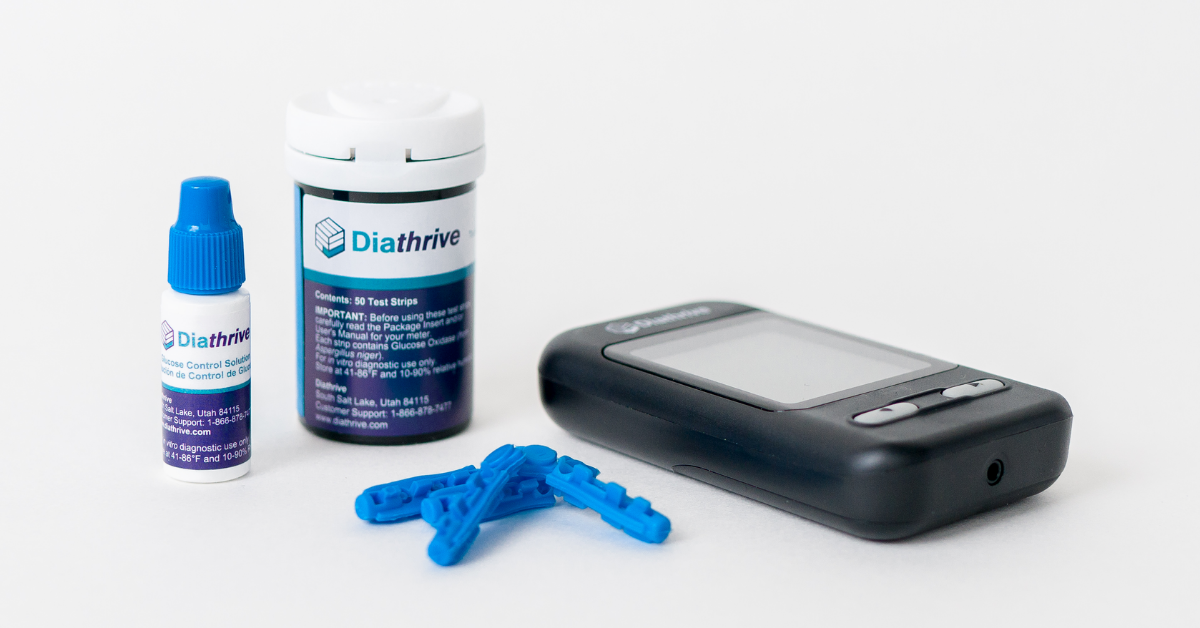
Blood sugar basics explained by diabetes educator Carla Cox.
Blood sugar, more correctly termed glucose, is a molecule found in the bloodstream. It is an important contributor to energy for the muscles and for the brain. In people without diabetes, the amount of glucose in the bloodstream is naturally and strictly regulated. When glucose level drops too low, more is released from the liver. After a meal when glucose level starts to rise, extra glucose is sent to the liver and the muscles for storage through the hormone insulin.
When someone develops diabetes, either not enough insulin is being made, or it is not very effective (known as insulin resistance). There are different reasons this occurs, and different names related to those reasons (Type 1, Type 2, LADA, etc). The common thread is blood glucose rises above levels which are normal, and when not addressed, complications can occur. The treatment will change based on the reason for the glucose elevation and could be lifestyle adjustments, oral medications, non-insulin injectables, and/or insulin.
Symptoms of high and low blood glucose
Symptoms for high (hyperglycemia) and low (hypoglycemia) glucose can be mild or severe depending on the level of the glucose in relation to where the blood glucose level is much of the time. A glucose level below 55 mg/dl is considered severe hypoglycemia. Symptoms can include fatigue, irritability, cold sweats, feeling lightheaded or shaky, and a racing heartbeat. Glucose levels that are this low can also result in seizures and, potentially, death. A glucose level this low is rare and is in response to having too much insulin in the bloodstream. It generally only occurs with people who inject insulin. Depending on circumstances, eating glucose or other fast carbohydrates may be sufficient treatment. However, this condition may require a rescue hormone called glucagon to be injected or given nasally. Medical assistance may also be needed if the glucose level continues to drop.
A glucose level below 70 mg/dl is the general marker for low glucose in someone with diabetes and should be treated with carbohydrates. Generally eating or drinking 10-15 grams of carbohydrate are sufficient to resolve low glucose at this level. Caution should be taken to not over-treat.
Symptoms of high glucose levels are thirst, frequent urination and being very tired. When glucose is high, the body tries to return the level to a normal concentration, taking fluid from between the cells in the body and shifting it to the bloodstream resulting in thirst and increased urination (lots of peeing!). People with high blood sugar can also be very tired as the glucose the body needs is concentrated in the bloodstream rather than the cells to do work.
Most of the time, large swings in blood glucose can be prevented or treated by the individual with diabetes. However, if there is a pattern of highs or lows that occur throughout the day or week, it is time to talk with the diabetes team about adjustments in therapy. In addition, if high glucose is accompanied by nausea, vomiting or extreme fatigue, or emergency rescue and help from another person is needed to treat a low blood sugar, the diabetes team should be contacted.
Blood Sugar FAQs
Why does my blood glucose change so much?
Sometimes it is easy to determine why glucose values might spike. For example, a much larger meal than usual, or forgetting medication. However, sometimes it appears to be a mystery. There are so many things that impact your glucose. Here is an abbreviated list to help you better understand potential causes:
| Variable | Direction | How to minimize change |
|---|---|---|
| Food Intake | UP | Carbohydrates have the largest impact, followed by protein and fat. By eating carbohydrates that are less processed (baked potato vs potato chips), and moderating the amount of carbohydrate will lessen the rise. Alcohol can also impact glucose levels, generally lowering them initially, and rising by morning. There is great variability in response between people and the quantity consumed, making generalizations difficult for alcohol. |
| Exercise | UP/
DOWN |
Exercise can have a huge impact on blood glucose. Aerobic activities (such as walking, running and biking) generally cause a drop in glucose; weight lifting and high-intensity activity (sprinting, stop-start sports such as basketball) can raise blood glucose and often glucose will drop hours later. The more you are trained for the sport you are participating in, the less impact it will have. For example, a person that cycles daily may see a drop in glucose on a long ride, but less so than a person who has not biked recently. The cyclist may also have a drop in glucose on a long hike as those muscles are not as used to exercise as the muscles used for cycling. |
| Medication | UP/
DOWN |
Diabetes medication (other than glucagon to treat very low blood glucose) always lower glucose levels. Medication to lower glucose is prescribed based on the reason glucose levels are high. People with type 1 diabetes require insulin, as the body no longer makes an adequate amount. People with type 2 diabetes have a variety of options that target different sites on the body that are not functioning at an optimal level. For example, some medications release more sugar in the urine, while others reduce the liver’s ability to release sugar into the bloodstream, or improve the body’s ability to use its naturally-produced insulin. Some medications that are not diabetes medications can raise glucose levels. For example, steroids can have a strong influence on glucose levels, often rising more than 100 mg/dl. In addition, many antipsychotic drugs will also raise glucose. Be aware and discuss this with your diabetes team if you see any changes in response to a new medication. |
| Stress and lack of sleep | UP | Physical and mental stress or pain generally raise glucose. If blood sugar remains high, medication may need to be altered during that time. Consult your diabetes team for advice. It is important that your glucose is treated appropriately, rather than waiting for days or weeks. |
| Hormones | UP/
DOWN |
Many hormones can impact glucose as well. This one is harder for you to control. Growth hormone increases glucose (in children mostly). These hormones are also responsible for many of the high glucose levels mentioned above in stress, such as epinephrine, cortisol, and during a menstrual cycle. |
This is not an exhaustive list. To learn more about what affects blood sugar, look at 42 Factors That Affect Blood Sugar from diaTribe News.
What is A1c?
The A1c (hemoglobin A1c or HbA1c) is a blood test that marks the amount of sugar that is coating (glycosylating) red blood cells. It is measured in a percent and provides an estimate of the average amount of glucose in your bloodstream over the course of the last 3 months. Anything that can impact your red blood cells (such as anemia) can also alter this number. But it is a good estimate and helps you and your diabetes team determine if your overall diabetes treatment is working well (not the daily ups and downs, but overall). It is often used to diagnose diabetes as well as to determine whether you have had diabetes for a while, or if it has been developed more recently. Improving your blood sugar will help lower your A1c.
Take a look at the A1c chart below to see how your current average blood sugar compares.

How can I improve my blood sugar?
From a lifestyle perspective, here are some ways you can improve your blood sugar:
- Eat moderate amounts of carbohydrates that are rich in nutrients and lower in processing.
- Make physical activity (exercise) a part of your daily life, doing so at the same time daily is best. But anytime works!
- Try to minimize physical and mental stress. Be upbeat (we all should strive for this anyway). Talk with your diabetes team if you are struggling to cope with this disease – they may have tips to help you.
- Get adequate amounts of sleep.
- Make sure to monitor your glucose level as scheduled. It is the only way to know if your treatment is working!
- Take your medication on time – do not skip!
- If you have any questions, ask. Your diabetes team is available to help!

